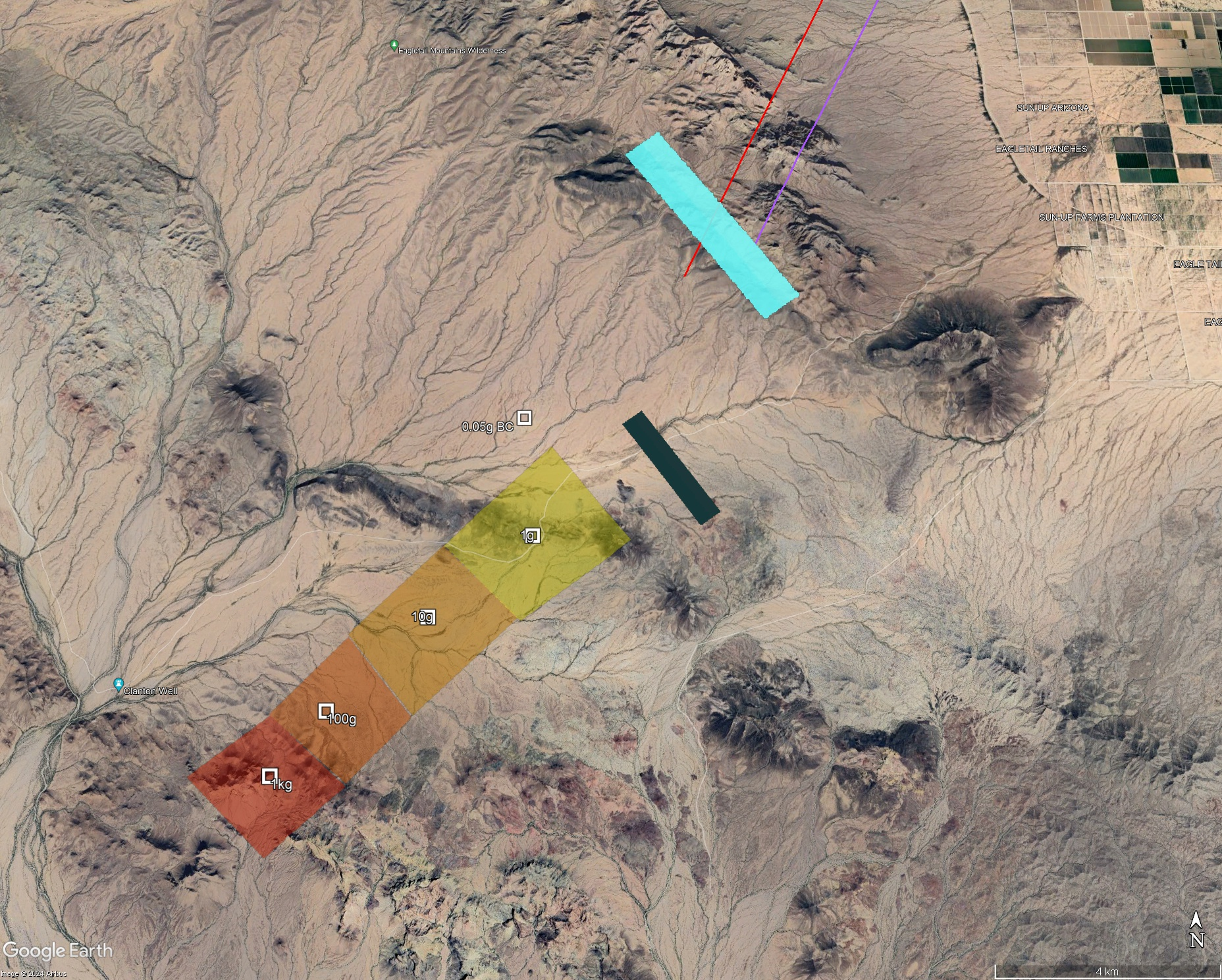DATE/TIME4/17/2024 @ 0259 UTC4/17/2024
|
LAT/LONG33.319924 • -113.324176
33.319924
|

IMPORTANT UPDATE: The first strewn field model used an erroneous ground track azimuth. I recalculated it and the actual strewn field lies a bit further west and south of the first iteration.
I have added two strewn fields here. DFM 03 shows a strewn field calculated from an azimuth and terminus provided by the NASA MEO office.
The second one (DFM 04) uses the same azimuth, but I back-calculated a terminus using a radar signature seen in KYUX (0255 UTC, 3.16 degree sweep) data. That signature, if it is meteorites, is composed of 0.05g fragments at 10km altitude. Back-calculating their position at 18km altitude and the time of the terminus gives a location 4.5km from the MEO terminus. The DFM 04 strewn field is calculated from this position.
Both of these strewn fields are further west and south than the first iteration, and appear to be more accurate than the erroneous first strewn field.
-----
This event is a long-lasting bolide seen west of Phoenix on the evening of 17 April 2024. A single radar signature appears at 10km altitude, corresponding to 0.05g material, and possibly some low-alitude single pixels.
Previous meteorite falls in Arizona demonstrate that the NEXRAD system is not as sensitive to them as in other states, possibly as an adaptation to airborne dust in this part of the world.
Several videos are available on the American Meteor Society (AMS) web page at the web page linked here.
